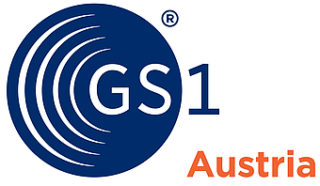Everything you need to know about Web EDI for SMEs

Web EDI is the perfect EDI solution for the needs of small and medium-sized enterprises (SMEs). Are you wondering why that is so? In this blog post, I will explain why.
Have you heard about Web EDI and did you wonder if it would be a good choice for your business? Or did one of your business partners recommend getting connected to Web EDI as a great first step towards EDI for SMEs? As an expert at the international EDI service provider EDITEL, I deal with questions related to Electronic Data Interchange of business documents via the Internet (the so-called Web EDI) on a daily basis. I will provide some useful answers as well as specific tips and tricks for SMEs below.
Why should I use Web EDI?
Let’s say your company produces vegetables, farms fish, or processes fresh meat and delivers these products to retail stores. And let’s assume you do not yet receive your orders “the modern way” – meaning electronically. In that case, retail stores probably place their orders using e-mail, fax, or – in very urgent cases – also via telephone. You process these order data manually and use them to prepare your deliveries. You then fill the orders, issue a despatch advice, and send the invoice via traditional mail. Lastly, you also have to archive your documents. For that purpose, you will probably put printouts from orders, despatch advices, invoices, corrections, etc. in a folder. The entire process is quite tedious and also very prone to mistakes.
How exactly does Web EDI work? Please provide a practical example for SMEs.
Let’s assume you are a vintner who delivers wine to retail stores. Participating retail stores can use Web EDI to send you digital orders in a standardized format. It’s direct and happens almost in real time. By the way, the technical term for electronic orders is ORDERS. Once an order has been received, you will immediately receive a notification about it. You can then log on to the online portal with your access data to view the order and the desired delivery date. Once you have filled the order and prepared for shipping, you will use the portal to notify the client about the imminent delivery and automatically send the despatch advice (DESADV). Most data are conveniently taken from the previously received order. Subsequently, you will use these data and the agreed-on prices and payment conditions to issue the invoice (INVOIC) right away. And that’s it! All these steps are transparent and can be fully traced by you and your retail clients. Electronic tamperproof document archiving is available on the portal as well.
ORDERS, DESADV… do I really need to know all this?
There are just a few technical terms that you should familiarize yourself with over time. Simply put, the system is based on an EDI language that is understood by users around the world. This language is called EDIFACT. Strictly speaking, there are more than 200 EDIFACT message types, but only a few are commonly used on Web EDI portals for SMEs, and these include ORDERS, DESADV, and INVOIC. If you are wondering why INVOIC is missing an “e” at the end, keep in mind that the abbreviations for all message types are standardized and are limited to six capital letters. This abbreviation is complemented by the GLN (= Global Location Number) that identifies your company and the EAN number (also called GTIN or Global Trade Item Number) for product identification. And that’s about it in terms of EDI lingo.
What is the difference to fully integrated EDI systems?
Not surprisingly, high-performance EDI systems for large businesses offer numerous technical possibilities and advantages. However, they also require careful integration into existing ERPs and other IT systems. Yet oftentimes, businesses with a limited amount of business documents will find that cost-efficient EDI via an online portal is all they need. Just like in the case of web e-mail (GMX, Gmail), Internet access is needed to use the system so that the user merely needs a computer and Internet access. Also, there is no need to implement anything at the company. The exchange of business documents can start immediately. The Web EDI portal by EDITEL is called tradeIT. It can be used to reach all major Austrian retail partners in their “language.”
One of my company’s business partners wants me to switch to EDI. What could be the reason for it?
For reasons of efficiency, is it convenient for large retailers to have as many of their consumer good suppliers as possible use an EDI connection. This allows them to receive all data in a structured format and they can automatically process them in their own IT systems. At renowned corporations including SPAR, Billa, Billa Plus, Penny, Metro, retail members of the Markant organization and other discount retailers, Electronic Data Interchange of business documents (EDI) has been delivering excellent results for many years. In addition, one of the many benefits of Web EDI is that supplier, retailer, and article master data can be defined in the system. These are then automatically added to orders, despatch advices, and invoices. Or, as we would say in EDI lingo: they are automatically added to ORDERS, DESADV, and INVOIC.
Where can I get expert assistance if I have questions about Electronic Data Interchange for SMEs?
If you have any questions, my colleagues and I will be more than happy to help.
About the author
Klaus Schaffer
Business Development Manager at EDITEL Austria.
About EDITEL

EDITEL, an EDI service provider, is the internationally leading provider of EDI solutions (EDI = Electronic Data Interchange). The company specializes in the optimization of supply chain processes for companies of all sizes and in all industries.
Portrait photo copyright Editel/Petra Spiola
Symbolic image copyright pixabay




